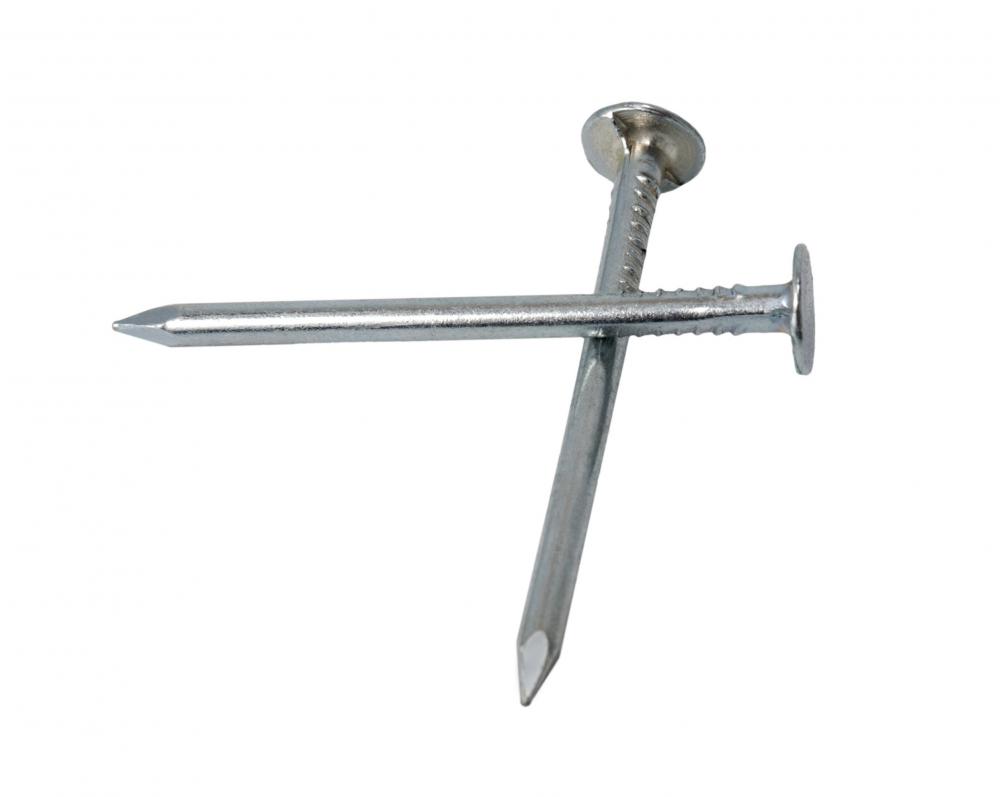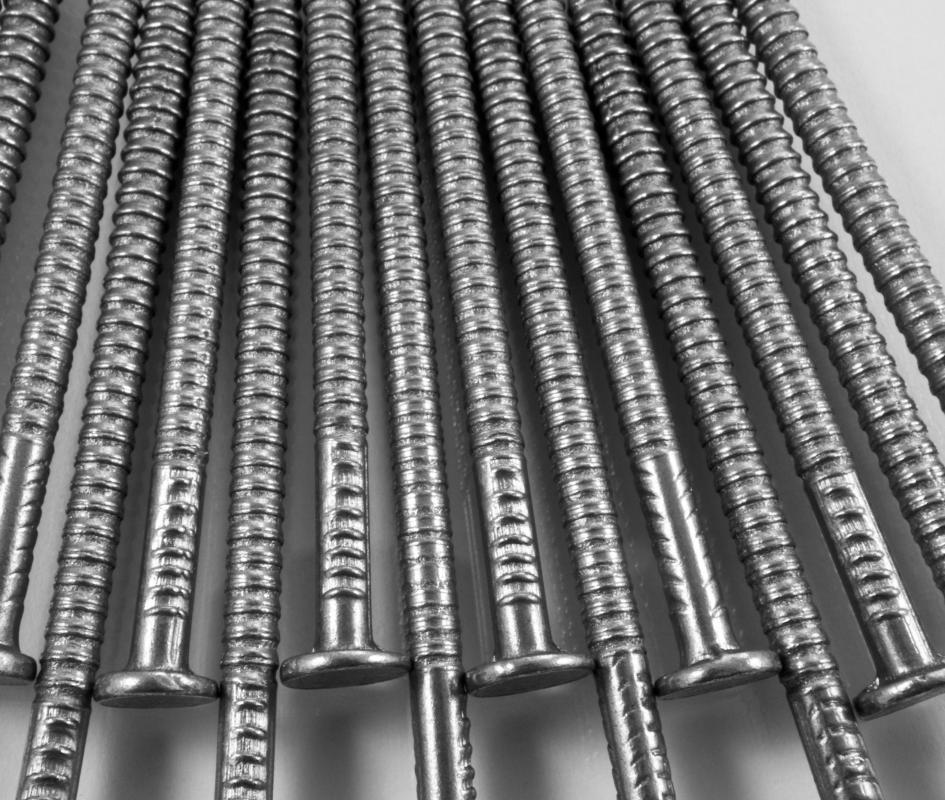At HomeQuestionsAnswered, we're committed to delivering accurate, trustworthy information. Our expert-authored content is rigorously fact-checked and sourced from credible authorities. Discover how we uphold the highest standards in providing you with reliable knowledge.
What are the Different Types of Nails?
There are many different types of nails, all of which can be categorized in a variety of ways. They might be grouped by general purpose, varying features or the material and finish used in their manufacture. Some of the different types of nails, if grouped by purpose, are common nails, box nails and casing nails. Other types of nails include finishing nails, roofing nails and masonry nails. These are many more types of nails that exist; these are just a few examples of some of the more common ones.
Common nails are the standard type of nails used for construction. Box nails are similar to common nails in appearance but are used for lighter work. Casing nails are used for lighter work as well, but those that require a finer appearance. Finishing nails also provide a fine, discreet appearance, though they are smaller than casing nails. Lastly, as their names describe, roofing nails are used primarily for roofs and masonry nails are used for brick and other masonry.

Nails can also be categorized by their features. The three features of a nail are its head, shank and point. The most common type of head that a nail might have is a flat head. Common nails, box nails and roofing nails, for example, might all be considered flat head nails. Another type of head, called the counter-sink head, allows an individual to hide the nail for aesthetic appeal; casing nails have counter-sink heads.

There are three general types of shanks: smooth, spiral and ringed. Nails with smooth shanks do not hold as well as those with spiral or ringed shanks. They are not meant to, as nails with spiral or ringed shanks are the ones designed for permanence. Some nails might be manufactured with any of the three types of shanks, such as the case with common and box nails.

The point of a nail is important as it determines some valuable aspects of the nail, such as how easily an individual might be able to drive it. Each type of point has its advantages and disadvantages, but the most common point is the diamond point. Other types of points a nail might have include a blunt diamond point and a conical one. An example of a diamond point nail is a finishing nail, while an example of a conical point nail might be a masonry nail.

Sometimes an individual might hear a nail referred to as an aluminum nail or a galvanized nail. This is because another way to categorize nails is through the materials and finishes used in their manufacture. Aluminum, copper and steel are different materials that nails might be made out of, while different finishes include bright, blued and galvanized. These different types of materials and finishes determine various aspects of a nail, including its utility and resistance to corrosion.
AS FEATURED ON:
AS FEATURED ON:














Discussion Comments
@ocelot60- I like to use roofing nails to place heavy pictures and artwork on the wall. I like that they are strong and able to hold weight, and that they also have the beneficial feature of wide heads. This is important when it comes to placing hooks, wires, and string over them when you hang your artwork.
Regardless of the type of nail you choose to use to hang pictures and paintings on the wall, here is a helpful tip that will add a little extra security to the nail. When you pound it into the wall, use the head of the hammer to tap the nail upward in a slightly angled position. This helps to distribute the weight of the object you hang on it while also preventing the hanging mechanism from sliding off of the nail.
@ocelot60- I think that using a common or box nail should work fine for you. Though not so large that they could cause damage to a wall, both types of nails are durable enough to hold significant weight.
Does anyone have some advice for choosing the best type of nail for hanging a heavy picture on a wall? I don't want to mess up the wall, but I also want to make sure that the nail I use is durable and able to hold it safely into place.
Post your comments